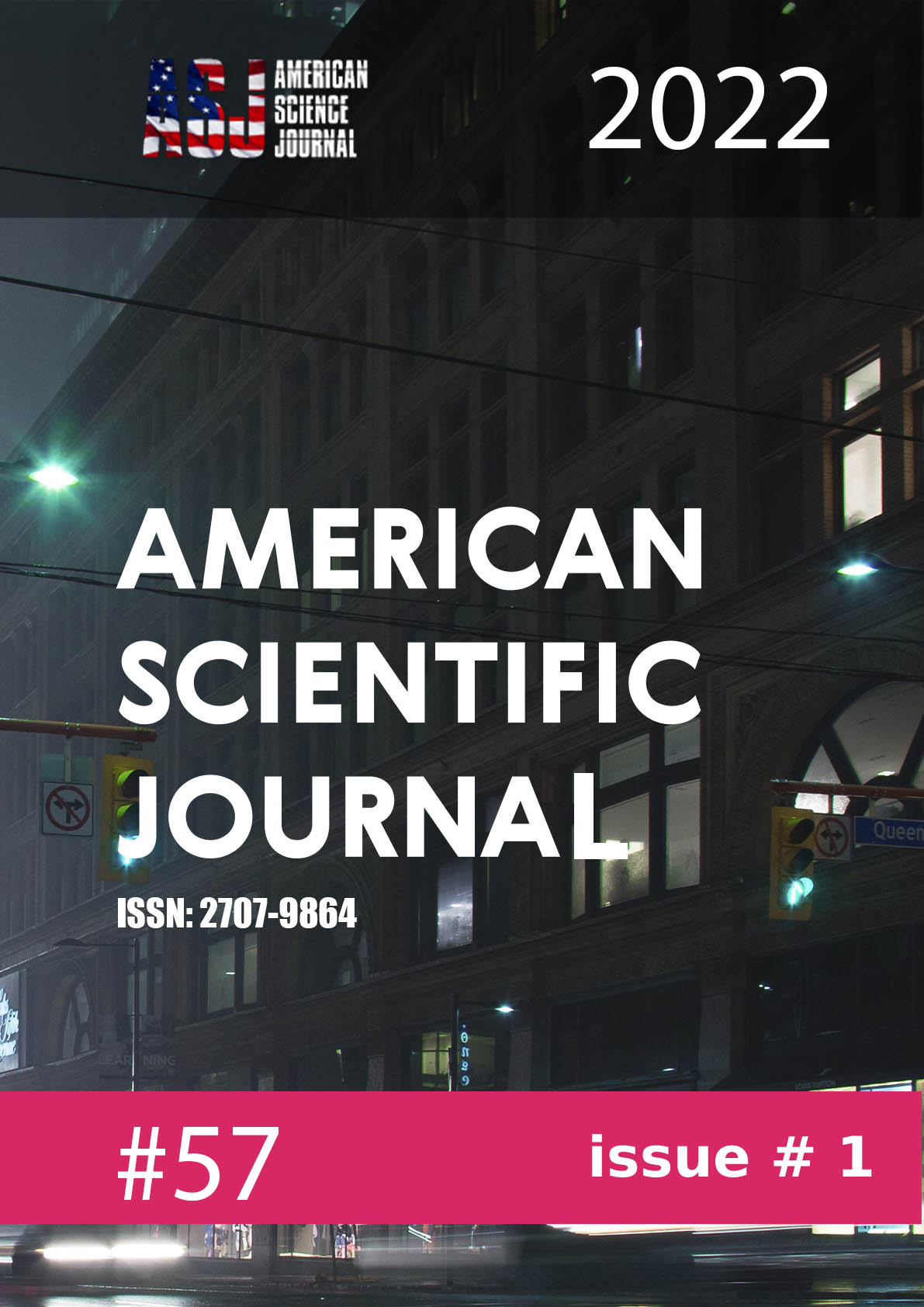EFFECT OF CHITOSAN, PHOTOMODULATION AND PHYSICAL EXERCISES ON THE HEALING OF THE SURGICAL WOUND IN RATS
Keywords:
surgical site infection, rehabilitation, chitosan, photomodulation, physical exerciseAbstract
In an experiment on 30 white rats, the effect of the chitosan complex, photomodulation with methylineic blue and physical exercises on postoperative wound healing was studied. The animals are divided into 5 groups of 6 rats. Group 1 - intact animals. For other groups, hair was cut on the lateral surface of the abdomen and a layer-by-layer skin incision 3 cm long was performed under local anesthesia. Group 2 - rats with natural wound healing for 10 days. Animals of group 3 were daily smeared with chitosan cream, 4 groups underwent daily photomodulation of the skin surface treated with methylene blue. The fifth group of rats, along with chitosan core and photomodulation, from the third day after the operation, received low-intensity exercise on a treadmill for 30 minutes. Wound healing was recorded by determining the area of the wound by photographing and histological examination of the skin and internal organs.
Obtained results: The best wound healing according to planimetry and histological examination was reliably noted in the 5th group during the complex treatment of the surgical wound.
Conclusions: The rehabilitation complex for large surgical wounds should include early local impact on the wound of physiotherapy procedures and physical exercises.
References
Bazunova M.V., Kulish E.I., Shangaraev K.R. Chitosan-containing substances: receipt and use / Certificate of registration of the database RU 2016620154, 02.02.2016. Application No. 2015621529 dated 07.12.2015.
Baytukalov T.A., Bogoslovskaya O.A., Olkhovskaya I.P., Glushchenko N.N. et al. Regenerating activity and antibacterial effect of low molecular weight chitosan // Izv. RAS. Ser. biol. - 2005. - No. 6. - S. 659-663.
Baranov A.V., Tsyganova G.I., Pimenova L.Ya., Kartusova L.N. The state of scientific research in the field of photodynamic therapy in the Russian Federation in 2016-2017. // Laser medicine. 2018.Vol. 22.No. 3.P. 44-49.
Bolshakov I.N., Fedyakina S.P., Chuyan E.V. The use of chitosan in the treatment of inflammatory adhesions in the abdominal cavity // Sib. honey. review. 2002. - No. 2. S. 36-44.
Gertman V.Z., Pushkar E.S., Ponomarenko S.V. Development of parameters of antibacterial photodynamic therapy using light in the optical range and a methylene blue photosensitizer // Actual problems of current medicine: News of the Ukrainian Medical Dentistry Academy. 2017.Vol. 17.No. 3 (59). S. 9-12.
Zudina I.V., Vedyaeva A.P., Bulkina N.V., Ivanov P.V., Alzubeidi A.F.A. Study of the effect of chitosan on the process of bone defect healing in in vivo and in vitro experiments // Izvestia of Saratov University. New episode. Series: Chemistry. Biology. Ecology. 2016.Vol. 16.No. 2.P. 171-179.
Maslakova N.D., Mogilevets E.V., Savosik A.L. and others. Results of the application of a new method of combined antimicrobial photodynamic therapy in the surgery of purulent wounds, // Military medicine. 2016. No. 3 (40). S. 60-63.
Atai Z. Atai M, Amini J, Salehi N. In vivo study of antifungal effects of low-molecular-weight chitosan against Candida albicans // J Oral Sci. 2017; 59 (3): 425-430. doi: 10.2334 / josnusd.16-0295.
Camacho-Alonso F, Julián-Belmonte E, Chiva-García F, Martínez-Beneyto Y. Bactericidal Efficacy of Photodynamic Therapy and Chitosan in Root Canals Experimentally Infected with Enterococcus faecalis: An In Vitro Study // Photomed Laser Surg. 2017 Apr; 35 (4): 184-189. doi: 10.1089 / pho.2016.4148. Epub 2017 Jan 9.
Gundel O, Gundersen SK, Dahl RM, et al. Timing of surgical site infection and pulmonary complications after laparotomy // Int J Surg. 2018 Apr; 52: 56-60. doi: 10.1016 / j.ijsu.2018.02.022.
Keylock KT, Vieira VJ, Wallig MA, DiPietro LA, Schrementi M, Woods JA. Exercise accelerates cutaneous wound healing and decreases wound inflammation in aged mice // Am J Physiol Regul Integr Comp Physiol. 2008 Jan; 294 (1): R179-84. doi: 10.1152 / ajpregu.00177.2007. Epub 2007 Nov 14. PMID: 18003791
Mazurek P, Kuliński S, Gosk J The possibilities of using a chitin and chitosan in wounds treatment // Polim Med. 2013 Oct-Dec; 43 (4): 297302.
Mo X, Cen J, Gibson E, Wang R, Percival SL. An open multicenter comparative randomized clinical study on chitosan. // Wound Repair Regen. 2015 JulAug; 23 (4): 518-24. doi: 10.1111 / wrr.12298. Epub 2015 Jun 24.
Mueller TC, Nitsche U, Kehl V. et al. Intraoperative wound irrigation to prevent surgical site infection after laparotomy (IOWISI): study protocol for a randomized controlled trial. // Trials. 2017 Sep 4; 18 (1): 410. doi: 10.1186 / s13063-017-2154-6.
Weiser MR, Gonen M, Usiak S et al. Effectiveness of a multidisciplinary patient care bundle for reducing surgical-site infections // Br J Surg. 2018 Nov; 105 (12): 1680-1687. doi: 10.1002 / bjs.10896.
Downloads
Published
Issue
Section
License

This work is licensed under a Creative Commons Attribution-NoDerivatives 4.0 International License.
CC BY-ND
A work licensed in this way allows the following:
1. The freedom to use and perform the work: The licensee must be allowed to make any use, private or public, of the work.
2. The freedom to study the work and apply the information: The licensee must be allowed to examine the work and to use the knowledge gained from the work in any way. The license may not, for example, restrict "reverse engineering."
2. The freedom to redistribute copies: Copies may be sold, swapped or given away for free, in the same form as the original.
 информационное письмо
информационное письмо


